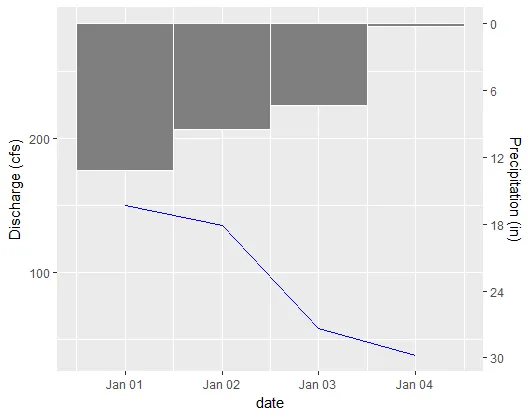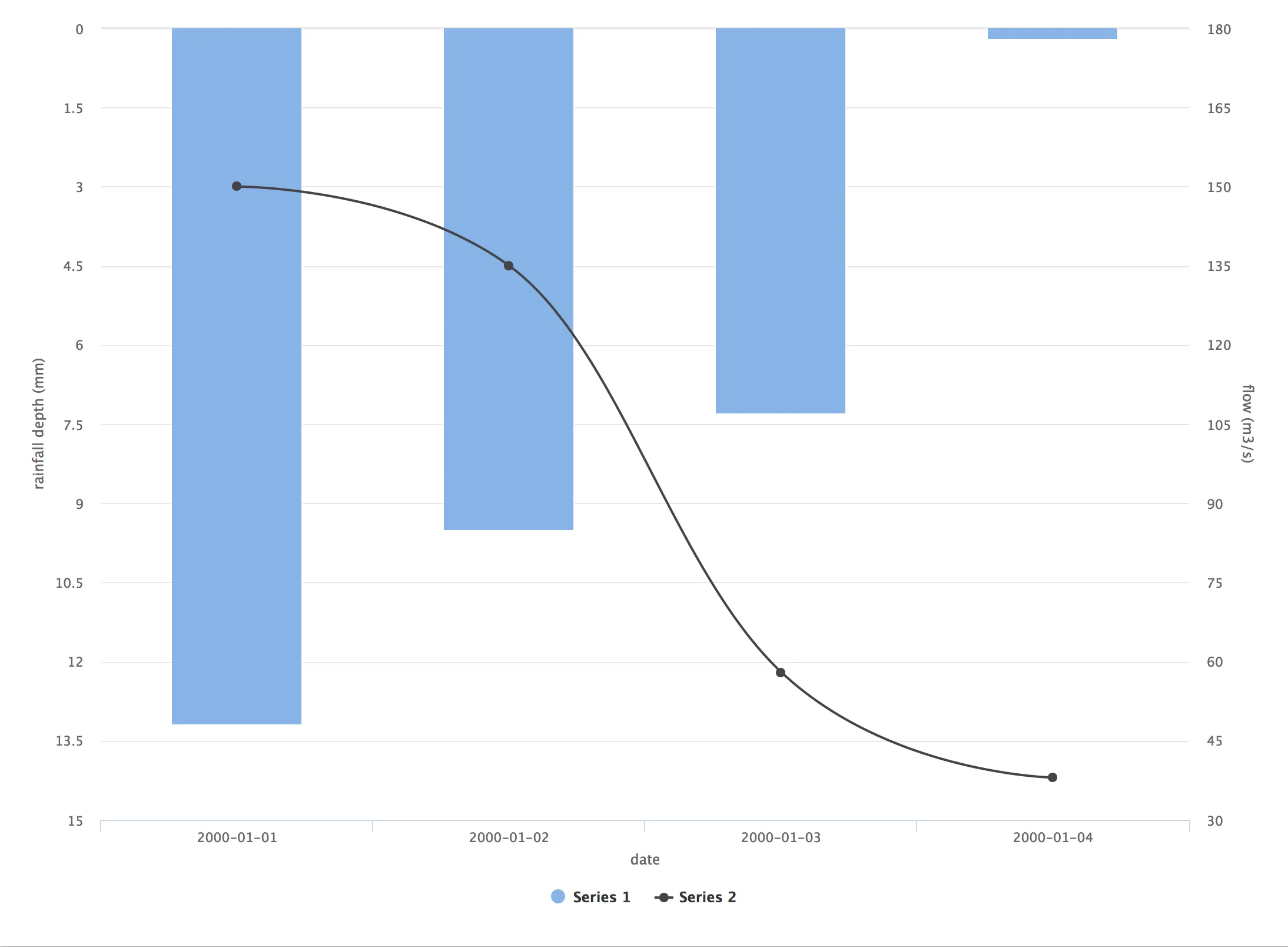对于水文学家来说,雨量历时曲线和流量历时曲线是常用的。如下图所示: 其中,X轴代表日期,左侧反向的Y轴代表降雨量,右侧的Y轴代表流量。
其中,X轴代表日期,左侧反向的Y轴代表降雨量,右侧的Y轴代表流量。
我有一个降雨表格和一个流量表格。
这是我的代码。
 其中,X轴代表日期,左侧反向的Y轴代表降雨量,右侧的Y轴代表流量。
其中,X轴代表日期,左侧反向的Y轴代表降雨量,右侧的Y轴代表流量。我有一个降雨表格和一个流量表格。
####Rain Table#### ####Discharge Table####
Date Value Date Value
2000-01-01 13.2 2000-01-01 150
2000-01-02 9.5 2000-01-01 135
2000-01-03 7.3 2000-01-01 58
2000-01-04 0.2 2000-01-01 38
这是我的代码。
ggplot(rain,aes(x=DATE,y=value)) +
geom_bar(stat = 'identity')+
scale_y_reverse()+
geom_line(data =discharge,aes(x=DATE,y=value))
但是我不知道如何在两个不同的Y轴上表示这些值。


sec_axis(),ggplot2仍需要手动进行1:1的转换工作才能正确缩放第二个轴。我理解这是该特定科学领域中的一个重要图表,但从长远来看,您可能需要考虑使用基本图形或叠加绘图代替。 - hrbrmstr2000-01-01作为出院值吗? - hrbrmstr